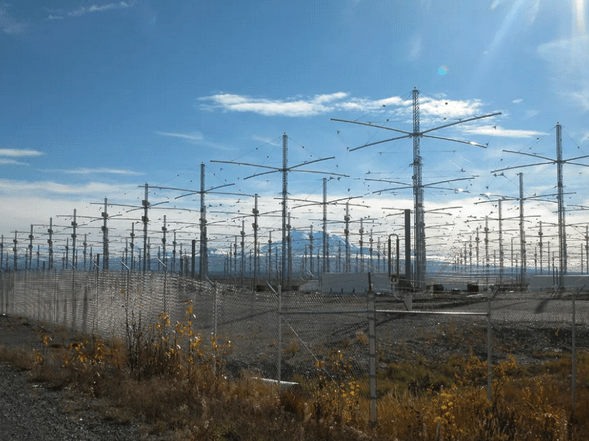The U.S. Air Force has notified Congress that it intends to shut down HAARP, a controversial Alaska-based research facility that studies an energetic and active region of the upper atmosphere.
Conspiracy theorists are abuzz about the news, given that HAARP (short for High Frequency Active Auroral Research Program) has long been the center of wild speculation that the program is designed to control the weather — or worse. In 2010, Venezuelan leader Huge Chavez claimed that HAARP or a program like it triggered the Haiti earthquake.
For the record, the Haitian quake of 2010 was caused by the slippage of a previously unmapped fault along the border of the Caribbean and North American tectonic plates.
HAARP is a research program designed to analyze the ionosphere, a portion of the upper atmosphere that stretches from about 53 miles (85 kilometers) above the surface of the Earth to 370 miles (600 km) up. The program has been funded by the Air Force, the Navy, the University of Alaska and DARPA (the Defense Advanced Research Projects Agency). [Top 10 Conspiracy Theories]
Why HAARP exists
The U.S. military is interested in the ionosphere because this portion of the atmosphere plays a role in transmitting radio signals. HAARP sends radio beams into the ionosphere to study the responses from it — one of the few ways to accurately measure this inaccessible part of the atmosphere.
HAARP operates out of the HAARP Research Station in Gakona, Alaska, where it has a high-power radio frequency transmitter that can perturb a small portion of the ionosphere. Other instruments are then used to measure the perturbations.
The goal of the program is to understand the physics of the ionosphere, which is constantly responding to influences from the sun. Solar flares can send solar particles racing toward Earth, occasionally disrupting communications and the electrical grid. If scientists could better understand what happens in the ionosphere, they might be able to mitigate some of these problems.
But the Air Force is no longer interested in maintaining HAARP, according to David Walker, the Air Force deputy assistant secretary for science, technology and engineering.
At a Senate hearing on May 14, Walker said the Air Force has no interest in maintaining the site, and is moving in another direction in ionospheric research.
Politics and conspiracy
The Air Force’s plan to destroy HAARP has detractors.
“While the Air Force neither wants nor appreciates the unique value of HAARP, users from several federal agencies, laboratories and universities, and friendly nations such as Canada, Britain, Taiwan, South Korea, Sweden and Norway, are eager to use its unique resources, which would further spread American influence and leadership,” Dennis Papadopoulos, a professor of physics and astronomy at the University of Maryland, wrote in an outraged opinion piece in the Alaska Dispatch.
HAARP cost more than $290 million to build, much of it earmarked by late Senator Ted Stevens (R-Alaska), who had great influence over the U.S. defense budget during his time in Congress. The site was host to numerous projects over the years, including the creation of the first man-made aurora in 2005. The site’s generators now require remediation to meet the environmental standards set in the Clean Air Act, an expense no one seems keen to take on.
But conspiracy theorists think HAARP’s purpose is far more sinister than meets the eye. The program has been blamed for everything from global warming to natural disasters to mysterious humming noises in the sky.
Name a natural phenomenon, and someone probably suspects HAARP of being behind it. Online, conspiracy theorists suggest that HAARP was to blame for the 2011 earthquake and tsunami in Japan; the Moore, Oklahoma, tornado of 2013; a landslide in 2006 in the Philippines; and many more natural disasters. Other conspiracy theories hold that HAARP controls people’s minds or is capable of altering the very fabric of reality.
These theories have yet to subside, even though very little has been going on at HAARP over the past year. In May 2013, the site shut down during a change in operations contractors. At the time, the HAARP program manager told reporters that the site was temporarily closed and locked, with only one DARPA project left to wrap up by early 2014.
Original: https://www.livescience.com/45829-haarp-shutdown.html

